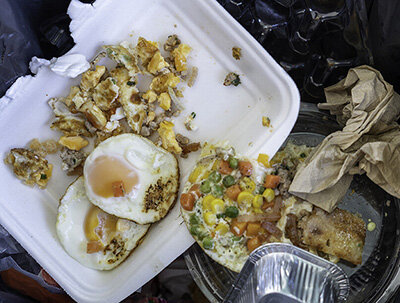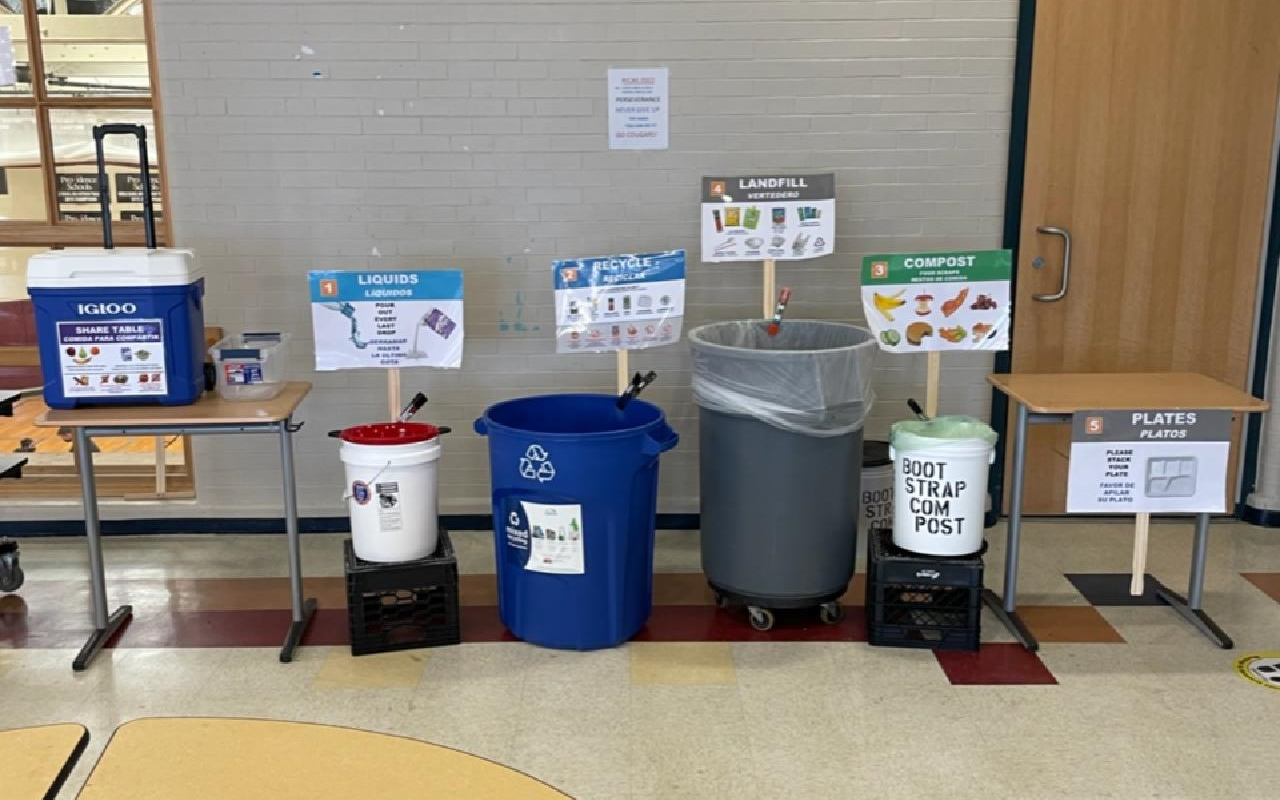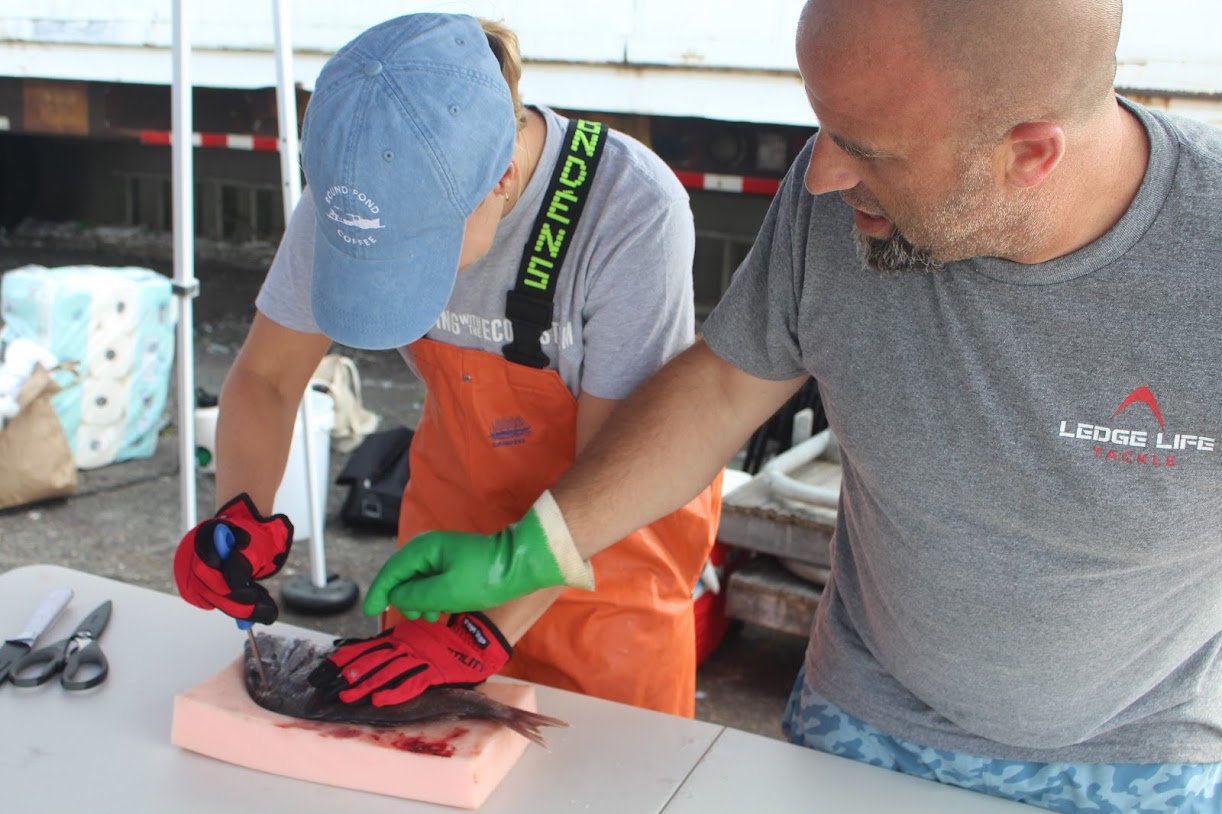Recycling Club Program Aims to Reduce Food Waste in Schools
August 26, 2022

PROVIDENCE — In the next few weeks, thousands of students will return to school. Some of those students will eat school lunch five days a week, Monday through Friday. Over the course of the next year, students at public and private educational institutions will generate an estimated 5 million pounds of food-related waste from cafeteria-served lunches.
Most of the waste is what you would expect: milk cartons and juice boxes, half-eaten cafeteria pizzas, sandwich crusts, and an endless array of plastic wrappers. Students will dump whatever is left over from their lunches — finished or not — into trash bins, which are then transferred to dumpsters and eventually shipped to the Central Landfill in Johnston.
It’s not all half-eaten food, though — some of it is perfectly edible, perfectly recoverable food. According to an estimate from the Rhode Island Schools Recycling Club, an Environmental Protection Agency (EPA) grant-funded program dedicated to reducing school waste, schools could recover in total 388 tons of safe-to-eat food for hungry students or food pantries annually.
In a state where 1 in 6 residents and 1 in 4 families with children are food insecure, the waste is both literal and figurative.
Rhode Island Schools Recycling Club co-director Jim Corwin said he was astounded by how much food the program has recovered.
“In the last school year, we diverted 13.6 tons of food [from the landfill] and recovered something like 1,600 pounds for local food shelters,” he said. “We’ve had some really good success.”
Corwin runs the program with co-director Chris Ratcliffe and organizing director Warren Heyman. They run what they call a “high touch” program: during the school year, they go into schools five days a week and educate teachers, cafeteria workers, custodians, and students the ins and outs of diverting waste from the landfill.

The club’s schools divide cafeteria waste into six stations instead of a single group of trash bins. First, unopened or uneaten food is placed onto a “share table” for recovery, then students pour leftover liquids, such as milk or juice, into a separate container. Students then separate recyclable materials from the single-use plastic wrappers and utensils, which are thrown in a traditional gray trash barrel that will eventually go into the landfill.
Most organic food waste is divided into a compost bin, and depending on the school, is either hauled away by a composting company or students actively compost it on-site. Finally, the cafeteria trays themselves are separated and stacked for easier disposal into the trash.
“We do the heavy lifting; we go to the teachers and say, ‘This isn’t going to be any more work for you, or if it is, tell us and we’re going to help you,’” Heyman said.
In July 2021, Gov. Dan McKee signed the School Waste Recycling and Refuse Disposal Act into law. The bill requires schools to divert food waste from the landfill and requires school food service providers to donate any unserved, non-perishable, or otherwise unspoiled food to local food pantries.
The law is scheduled to go into effect Jan. 1, and applies to any school that generates at least 30 tons of organic waste annually or which is located within 15 miles of a composting or anaerobic digester facility with the capacity to accept such waste.
With composting facilities on Aquidneck Island and in Charlestown, and a new digester facility opened in Johnston, the law applies to virtually any school within Rhode Island’s borders.
But the law is ultimately an unfunded mandate, as the state provided no additional funding to schools to comply. And hauling trash isn’t cheap. Corwin estimated compliance expenses could cost a small elementary school about $2,500, and some $4,000 for a large middle school.
“Our goal is to go out there and figure out the best processes so other schools can follow these and make this cost neutral for schools,” Corwin said.
No matter what happens, trash must go somewhere, and Rhode Island is running out of room. The Central Landfill is expected to reach capacity no later than 2040, according to the latest estimates from the Rhode Island Resource Recovery Corporation (RRC).
RRC officials told legislators at a Senate Committee on Environment and Agriculture hearing earlier this year that by revising its pricing strategy, disposal volumes sent to the Central Landfill have dropped from more than a million tons a year to 650,000 tons, pushing the capacity date from 2034 to 2040.
“What this means for Rhode Islanders can’t be understated. Six more years of landfill life is a game changer,” RRC executive director Joe Reposa said. “It offers much-needed time for landfill alternatives to mature in the marketplace and for these viable alternatives to be adopted in the state.”
Part of the problem, according to Corwin and Heyman, is that food-service workers are serving students too much food. A study by the R.I. Schools Recycling Club in 2019 showed the average weight of lunches in elementary, middle, and high schools was 1.1 pounds, meaning a 6- or 7-year-old in first grade was being served the same amount of food as a teenager.
Elementary schools will generate 47 pounds of food waste per student annually. Middle schools will generate 39 pounds of waste per student, and high schools generate the least, at 15.6 pounds per student.
Corwin and Warren were awarded an EPA grant to continue their work for the upcoming school year, where they will retain the current four schools they work with but also add an additional four schools to be determined. They note the new state law going into effect has no funding attached and there is no specific penalty.
“Just getting the word out is a challenge,” Corwin said. “We can’t handle 100 schools if they all call us at the same time, but we have to get the word out.”
Categories
Join the Discussion
View CommentsRecent Comments
Leave a Reply
Your support keeps our reporters on the environmental beat.
Reader support is at the core of our nonprofit news model. Together, we can keep the environment in the headlines.
We use cookies to improve your experience and deliver personalized content. View Cookie Settings




School Recycling Club does great work. Interesting to note that the amount of waste going to Johnston has dropped by 35% since the tipping rates were raised. As the person who started RIRRC on the road to raising rates it is rather gratifying to see that it worked as planned. Now we need more composting facilities.
I am THRILLED about this program. I have worked schools all over New England and seeing unfinished lunches or UNOPENED packages being trashed would kill me. Children, naturally, need guidance to dispose of food items properly, so it’s up to school staff to be 100% committed to reiterating and supervising the process.
Thanks for making this much needed effort.